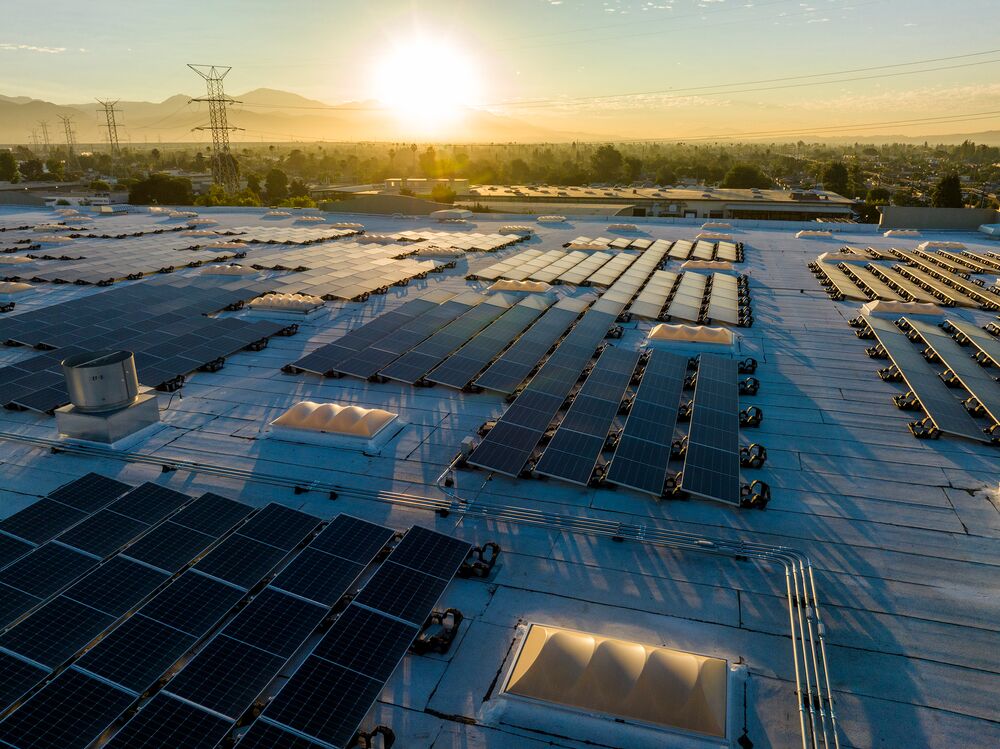
No two fingerprints are the same. The same is true of our customers and their carbon footprints.
One thing that is the same for our customers is the growing pressure they face from governments, customers and/or investors to reduce emissions. Given the differences in their businesses, they require spaces tailor-made to their needs – including their sustainability needs.
This is driving an increased demand for built-to-suit (BTS) warehouses featuring customized sustainability solutions.
What is a built-to-suit building and why does it matter?

A BTS facility is an innovative property designed to meet a customer’s specific operational and sustainability objectives. This often includes building specifications for operations like varying clear heights, parking spaces, additional yard space and integration of operational equipment and automation. BTS warehouse developments can also be tailored to meet a customer’s unique energy and decarbonization goals—starting from the ground up with solutions such as low-carbon concrete and energy generation from solar panels.
Eligible Prologis new developments and redevelopments are driving market leading sustainable design criteria including sustainability certifications. Prologis is also active in driving new standards and approaches such as the International Living Future Institute’s net zero building approach. A commitment to support the development of forward-looking standards will help us achieve our goal of net-zero emissions across our value chain by 2040.
Case Study: Building a Smart and Sustainable Warehouse from the Ground Up
A national retailer needed a modern distribution center that would improve the logistics and efficiency of their operations. Irwindale Distribution Center, a BTS project in Southern California, provided an ideal facility for their fast-paced business and achieved the highest level of certification in the Leadership in Energy and Environmental Design (LEED) rating system, LEED Platinum. In other words, carefully crafted design, materials and technology categorized this warehouse in the highest global standard of sustainable building, minimizing the facility’s carbon footprint.
- Onsite Clean Power: Solar panels installed on the building’s roof generate enough energy to power 90% of the building's energy usage. The building also features microgrid-ready electrical switchgear so that a battery energy storage system can be added to supplement the national retailer's energy needs at high-use times and reduce demand charges for power from the utility.
- Energy Efficiency: Energy and thermal modeling helped to design a building that maintains a moderate temperature for over 86% of the year. This allowed for the elimination of cooling in the warehouse. An all-electric, energy-efficient ventilation system keeps indoor air quality and comfort high, while keeping energy usage low. Intelligent LED lighting systems paired with a building design allowing for 63% natural daylight further reduced energy usage. Our customer will lower their energy cost by about a third of what they are paying today via efficiency measures. Paired with renewable energy, the customer will see more than 90% energy cost savings.
- Electrification: Thirteen Level 2 electric vehicle (EV) charging station and 65 EV capable spaces on the property present the opportunity to expand decarbonization to fleets of vehicles.
- Reduce, Reuse, Recycle: The design will reduce embodied carbon by 11% with:
- Over 30 materials used with Environmental Product Declarations showcasing the impact on the environment
- Over 20 materials used with material ingredient disclosures showcasing the impacts on human health
- 17% recycled construction materials, which supported an 80% landfill diversion
- Drought-tolerant landscape, reclaimed water and efficient systems for irrigation, low-flow plumbing, and advanced energy metering reduce total potable site water consumption by 75%.
From materials selection to energy systems to windows, skylights and more, the building was designed to fulfill important needs of the customer, including the business’ bottom line and auxiliary benefits like boosted health and wellness and minimized environmental impacts.
There is not a one-size-fits-all approach to sustainability. There a many different levers that companies can pull to support decarbonization. Our BTS projects offer a unique opportunity to create customized, innovative solutions that align with each customer’s distinct operational and environmental goals. Whether it's utilizing low-carbon materials, incorporating renewable energy, or future-proofing operations with electrification, our BTS facilities are designed to address today’s challenges while preparing for tomorrow’s opportunities. Overall, our growing portfolio of BTS industrial buildings helps to make a meaningful impact in the built environment that supports a low carbon supply chain.



